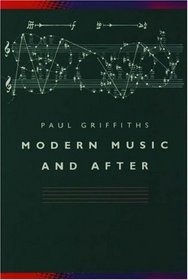Search -
Modern Music and After
Modern Music and After
Author:
The rich dynamic of modern music stands as a continual source of intrigue and curiosity, not only to the listening public, but to the artists who create the music as well. The first edition of Modern Music: The Avant-Garde Since 1945 addressed this phenomenon, offering a keen examination of how important composers have responded to the constant ... more »
Author:
The rich dynamic of modern music stands as a continual source of intrigue and curiosity, not only to the listening public, but to the artists who create the music as well. The first edition of Modern Music: The Avant-Garde Since 1945 addressed this phenomenon, offering a keen examination of how important composers have responded to the constant ... more »
ISBN-13: 9780198165781
ISBN-10: 0198165781
Publication Date: 12/28/1995
Pages: 373
Rating: ?
ISBN-10: 0198165781
Publication Date: 12/28/1995
Pages: 373
Rating: ?
0 stars, based on 0 rating
Publisher: Oxford Univ Pr (T)
Book Type: Hardcover
Other Versions: Paperback
Members Wishing: 0
Reviews: Amazon | Write a Review
Book Type: Hardcover
Other Versions: Paperback
Members Wishing: 0
Reviews: Amazon | Write a Review
Genres:




